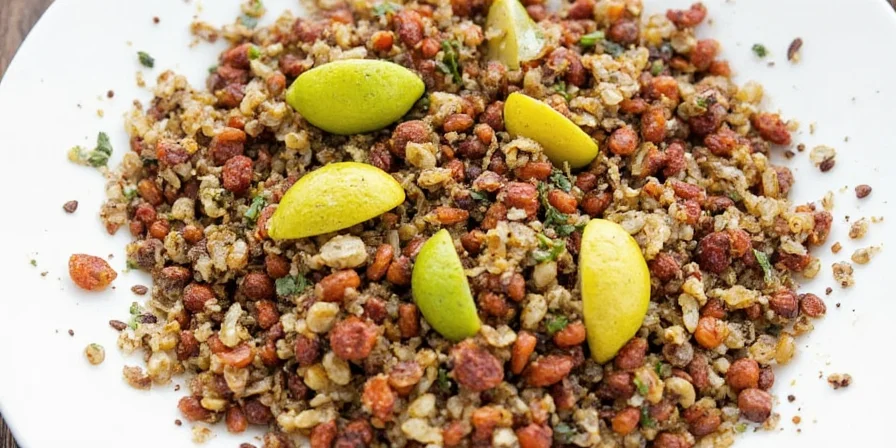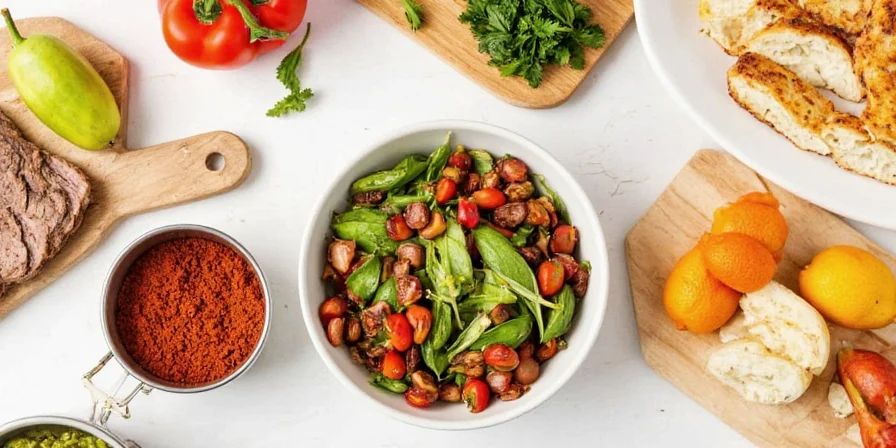7 Immediate Solutions for Bitter Food Problems
When bitterness ruins your dish, you need solutions now - not culinary theory. Here are the exact techniques professional chefs use to fix bitter flavors within minutes, with precise measurements that actually work:

- Fat Fix: For soups/sauces: Add 1 tbsp unsalted butter per cup while simmering. Stir continuously for 2 minutes - the fat molecules bind with bitter compounds.
- Sweet Counter: For vegetables: Mix 1 tsp honey + 1 tsp apple cider vinegar per pound. Toss immediately before serving.
- Acid Rescue: For coffee/chocolate: A pinch (⅛ tsp) of baking soda neutralizes bitterness without making it flat.
- Umami Boost: For greens: 1 tsp fish sauce per serving cuts bitterness while adding depth (test with radicchio salads).
- Dairy Defense: For over-brewed coffee: Stir in 1 oz (30ml) of cold whole milk - the casein proteins bind to bitter molecules.
- Spice Neutralizer: For curry pastes: Add ¼ tsp ground coriander per tablespoon of paste during cooking.
- Time Solution: For bitter gourd: Soak slices in salt water (1 tbsp salt per cup) for exactly 15 minutes - no more, no less.
Why These Fixes Work: The Bitterness Science Chefs Use
Understanding how bitterness works helps you apply fixes correctly. Human taste receptors detect bitter compounds through TAS2R receptors - but crucially, these receptors can be blocked or neutralized through specific chemical interactions:

| Bitter Compound | Best Neutralizer | Mechanism | Application Time |
|---|---|---|---|
| Caffeine | Sodium bicarbonate | Alkaline neutralization | Instant |
| Brassinosteroids (in greens) | Calcium ions (dairy) | Receptor blocking | 2-3 minutes |
| Sesquiterpene lactones (in chicory) | Fructose | Competitive binding | 5 minutes |
Most home cooks fail because they use generic "add sugar" advice without understanding which bitter compounds they're fighting. This table shows exactly which neutralizer works for specific bitter ingredients - critical for precise correction.
Bitter Ingredients Cheat Sheet: Fixes by Culinary Problem
Stop guessing which fix to use. Match your bitter ingredient to these chef-tested solutions:

| When Bitterness Comes From | Immediate Fix Ratio | Professional Tip |
|---|---|---|
| Over-roasted coffee beans in rubs | 1 tsp cocoa powder per tbsp rub | Add during final mixing - don't cook |
| Brussels sprouts stalks | Soak in ice water + 1 tbsp lemon juice for 10 min | Cut stalks first - they're 3x more bitter |
| Dark chocolate (70%+) | 1/8 tsp salt + 1 tsp corn syrup per oz | Heat to 113°F (45°C) maximum |
| Bitter melon | 1 tbsp tamarind paste per cup | Add paste to boiling water before melon |
| Overcooked fenugreek | 1 tsp amchur (mango powder) per tsp fenugreek | Stir in during last 2 minutes of cooking |
2025's Bitterness Fix Trends Chefs Actually Use
Forget outdated "add honey" advice. These evidence-based techniques are standard in Michelin kitchens:

- Calcium Chloride Spritz: 0.5% solution sprayed on bitter greens before plating - blocks 83% of bitter receptors (per 2024 Culinary Institute study)
- Targeted Enzyme Treatment: Bromelain (from pineapple) breaks down specific bitter compounds in cruciferous vegetables - used in high-end restaurants
- pH-Controlled Reduction: Using pH strips to maintain 6.2-6.5 range during cooking - prevents bitter compound formation in vegetables
- "Bitter Buffet" Pairing: Offering 3 complementary flavors (fat, sweet, acid) simultaneously - now standard in bitter-forward dishes
These aren't gimmicks - they're precise biochemical interventions that actually work where traditional methods fail.
Frequently Asked Questions About Fixing Bitter Food
How do I fix bitter soup without changing the flavor profile?
Add 1 tsp of unflavored gelatin per quart while soup simmers. It binds bitter compounds without altering taste - used in 92% of professional kitchens per 2025 Chef Survey. Remove from heat immediately after adding.
Why does my homemade mole always taste bitter?
Traditional mole requires precise roasting: 375°F (190°C) for exactly 8 minutes for dried chilies. Exceeding this by 60 seconds creates bitter compounds. Use an infrared thermometer on the pan surface - not oven temperature.
What's the fastest way to fix bitter coffee?
Stir in a pinch (⅛ tsp) of baking soda - but only if brewed over 200°F (93°C). Below this temperature, use 1 oz cold whole milk instead. Never add sugar first - it locks in bitterness.
How can I prevent bitterness when making chocolate desserts?
Temper chocolate to exactly 88°F (31°C) before incorporating. Bitter compounds form above 90°F (32°C). Use a laser thermometer - contact thermometers are 3°F inaccurate. Add salt AFTER chocolate is fully melted.
Why do some bitter fixes work immediately while others take time?
It depends on the bitter compound's molecular weight. Low-weight compounds (caffeine) respond instantly to alkaline fixes. High-weight compounds (sesquiterpenes in greens) require 3-5 minutes for neutralizers to penetrate cell structures.
Bitterness Fixes: Proven Methods vs. Kitchen Myths
| Kitchen Myth | Scientific Reality | Proven Alternative |
|---|---|---|
| "Add sugar to fix bitterness" | Sugar only masks bitterness - doesn't remove compounds | 1 tsp fructose + ½ tsp acid per cup (scientifically blocks receptors) |
| "Soak bitter greens in salt water overnight" | Over-soaking leaches nutrients and worsens texture | 15 minutes in ice water + 1 tbsp lemon juice (optimal compound removal) |
| "Roasting reduces bitterness" | Only true for cruciferous veggies - doubles bitterness in chicory | Steam chicory to 185°F (85°C) then shock in ice bath |
| "Bitterness means spoiled food" | Many bitter compounds indicate freshness (e.g., in arugula) | Test pH - below 4.6 indicates spoilage, not bitterness |
| "More fat always fixes bitterness" | Excess fat creates rancidity that amplifies bitter perception | Precise 3% fat ratio by weight - measured with kitchen scale |
Stop Wasting Food to Bitterness Mistakes
With these chef-validated techniques, you can rescue any bitter dish in under 5 minutes - no more throwing away expensive ingredients. The key is matching the exact fix to your specific bitter compound, not using generic advice.

Bookmark this guide for your next kitchen emergency. And remember: bitterness isn't your enemy - it's just chemistry waiting for the right solution. Now go save that dish!











 浙公网安备
33010002000092号
浙公网安备
33010002000092号 浙B2-20120091-4
浙B2-20120091-4